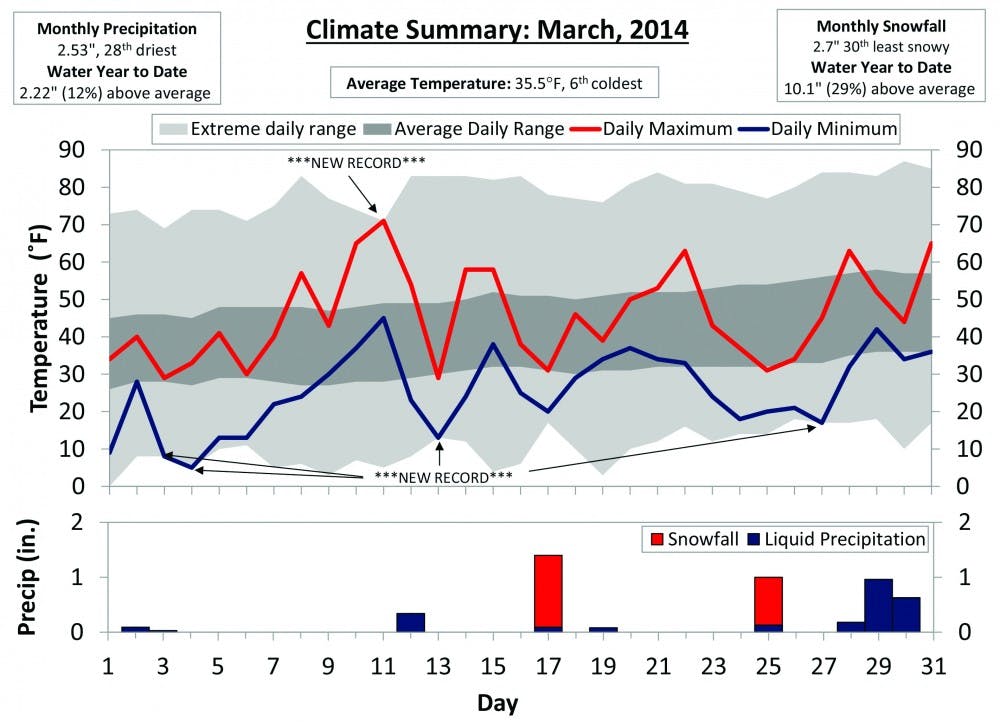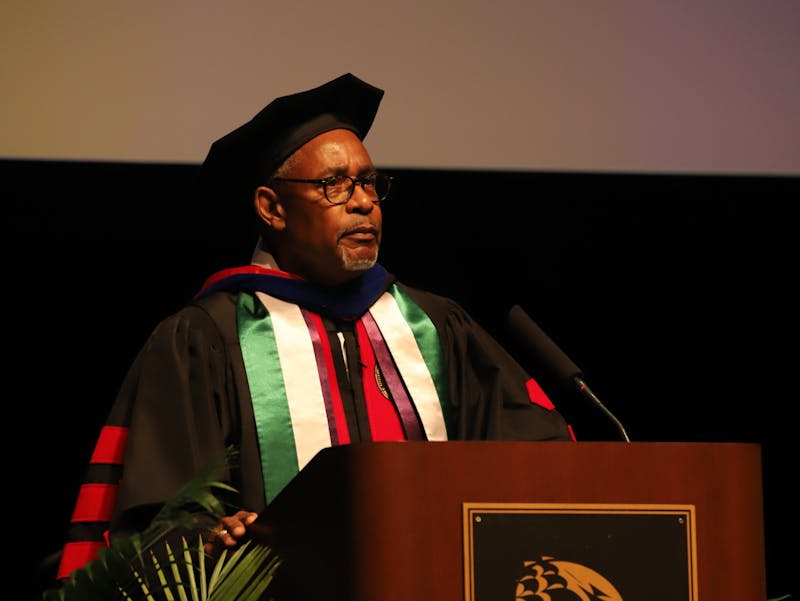It appears Jack Frost has finally been evicted from Pennsylvania, at least until next year. In his wake, he left a record-setting Pennsylvanian winter wonderland. The frosty hoodlum dumped a whopping 58 inches of snow on the state, which is the second biggest snowfall the state has seen since the infamous three-foot blanket back in 1995.
Our 58-inch snowfall was a lot more manageable this time around, coming in a few one-foot blankets instead of one big lump. It did, however, make for a seemingly never-ending source of slush and cold feet all winter long.
Incredibly low temperatures this winter set the stage for heavy snowfall.
Meteorologists everywhere seem to be baffled by such a cold winter. Since the 1970s, average temperatures have been consistently rising. Following the trend, one would expect recent winters to be even warmer still.
According to Dr. Timothy Hawkins, professor of geography and earth science at Shippensburg University, Shippensburg set four daily record low temperatures and one record high in the month of March.
The average temperature in the U.S. has increased 1.3 degrees Fahrenheit over the last century. This fact alone seems to support the theory of global warming.
Skeptics look at the recent winter as contrary evidence.
Skeptics argue that there is no overall dangerous global warming, but rather an alternating warming and cooling cycle. The recent cold winter, in this “alternating cycle” theory, is simply the beginning of the cooling period.
Dr. Joseph Zume of the geography and earth science department at SU has a different theory. “One of the reasons this winter was extremely cold was because the temperature in the tropics increased. This caused a greater change in the pressure differences between the tropics and the arctic, which in turn caused stronger jet streams, dragging very cool air across the United States. While nobody knows the exact reason, usually things that happen in the upper atmosphere affect surface conditions.”
As Dr. Zume’s theory illustrates, global warming skeptics should think twice before constructing oversimplified theories based on the “stick-your-head-out-the-window-and-see-how-cold-it-is” method of meteorology.
There are many complicated factors behind erratic temperatures. Pressure changes, jet streams, volcanic eruptions, tectonic shifts and many other factors all work together to yield chilly winters.
Data collected in future winters will be crucial for scientists to construct long term temperature trends. In the meantime, theories crash against one another in the wake of such an unusually chilly season.




The Slate welcomes thoughtful discussion on all of our stories, but please keep comments civil and on-topic. Read our full guidelines here.